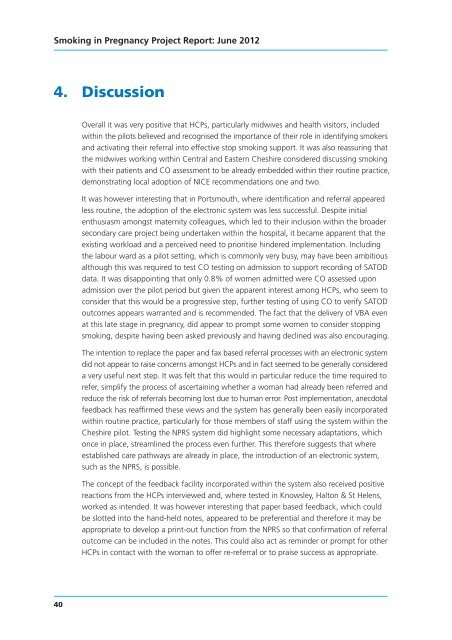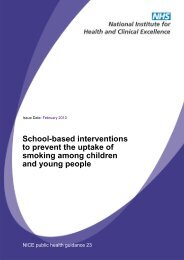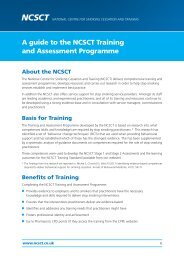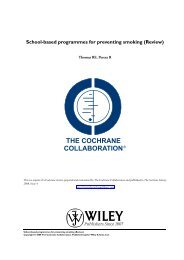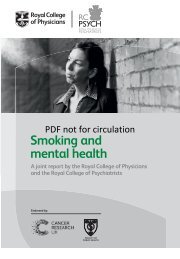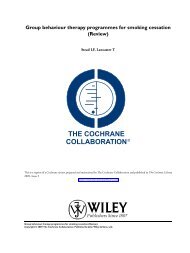published
published
published
You also want an ePaper? Increase the reach of your titles
YUMPU automatically turns print PDFs into web optimized ePapers that Google loves.
Smoking in Pregnancy Project Report: June 2012<br />
4. Discussion<br />
Overall it was very positive that HCPs, particularly midwives and health visitors, included<br />
within the pilots believed and recognised the importance of their role in identifying smokers<br />
and activating their referral into effective stop smoking support. It was also reassuring that<br />
the midwives working within Central and Eastern Cheshire considered discussing smoking<br />
with their patients and CO assessment to be already embedded within their routine practice,<br />
demonstrating local adoption of NICE recommendations one and two.<br />
It was however interesting that in Portsmouth, where identification and referral appeared<br />
less routine, the adoption of the electronic system was less successful. Despite initial<br />
enthusiasm amongst maternity colleagues, which led to their inclusion within the broader<br />
secondary care project being undertaken within the hospital, it became apparent that the<br />
existing workload and a perceived need to prioritise hindered implementation. Including<br />
the labour ward as a pilot setting, which is commonly very busy, may have been ambitious<br />
although this was required to test CO testing on admission to support recording of SATOD<br />
data. It was disappointing that only 0.8% of women admitted were CO assessed upon<br />
admission over the pilot period but given the apparent interest among HCPs, who seem to<br />
consider that this would be a progressive step, further testing of using CO to verify SATOD<br />
outcomes appears warranted and is recommended. The fact that the delivery of VBA even<br />
at this late stage in pregnancy, did appear to prompt some women to consider stopping<br />
smoking, despite having been asked previously and having declined was also encouraging.<br />
The intention to replace the paper and fax based referral processes with an electronic system<br />
did not appear to raise concerns amongst HCPs and in fact seemed to be generally considered<br />
a very useful next step. It was felt that this would in particular reduce the time required to<br />
refer, simplify the process of ascertaining whether a woman had already been referred and<br />
reduce the risk of referrals becoming lost due to human error. Post implementation, anecdotal<br />
feedback has reaffirmed these views and the system has generally been easily incorporated<br />
within routine practice, particularly for those members of staff using the system within the<br />
Cheshire pilot. Testing the NPRS system did highlight some necessary adaptations, which<br />
once in place, streamlined the process even further. This therefore suggests that where<br />
established care pathways are already in place, the introduction of an electronic system,<br />
such as the NPRS, is possible.<br />
The concept of the feedback facility incorporated within the system also received positive<br />
reactions from the HCPs interviewed and, where tested in Knowsley, Halton & St Helens,<br />
worked as intended. It was however interesting that paper based feedback, which could<br />
be slotted into the hand-held notes, appeared to be preferential and therefore it may be<br />
appropriate to develop a print-out function from the NPRS so that confirmation of referral<br />
outcome can be included in the notes. This could also act as reminder or prompt for other<br />
HCPs in contact with the woman to offer re-referral or to praise success as appropriate.<br />
40


